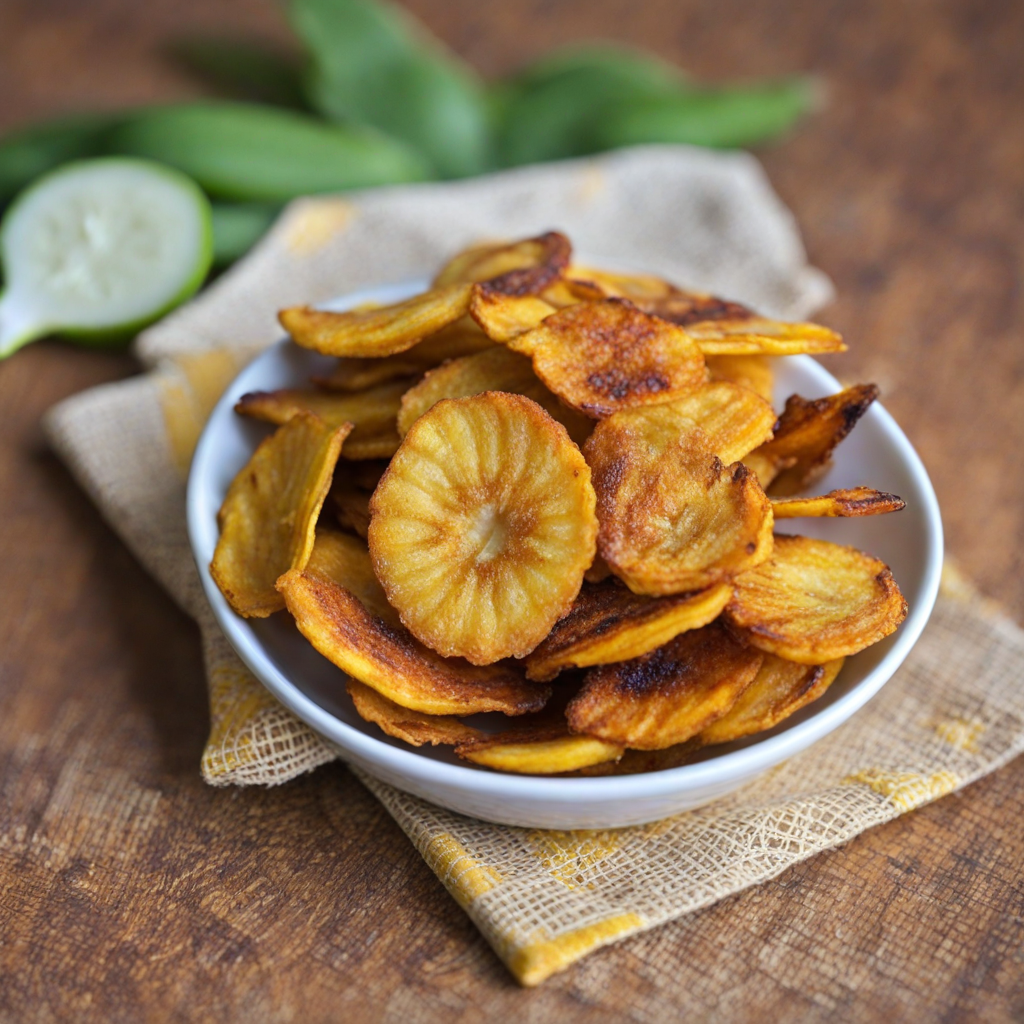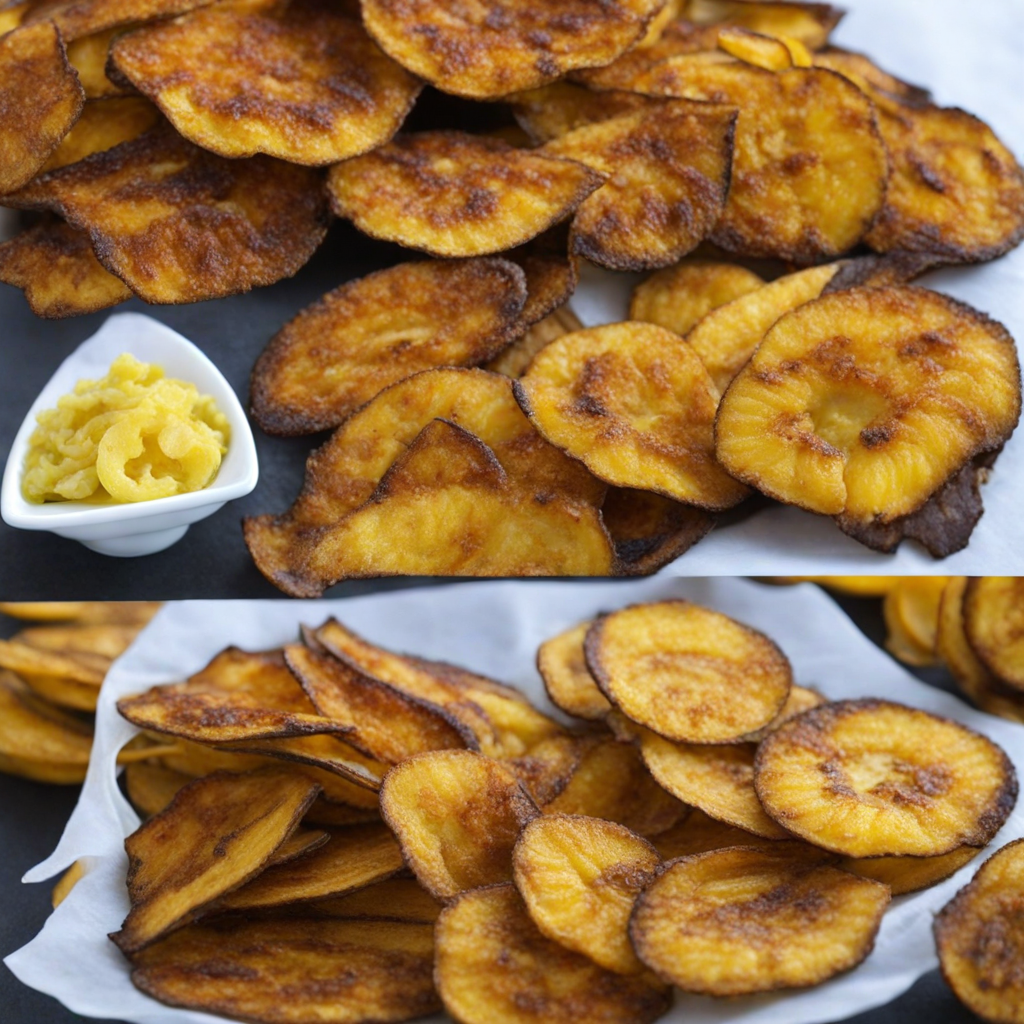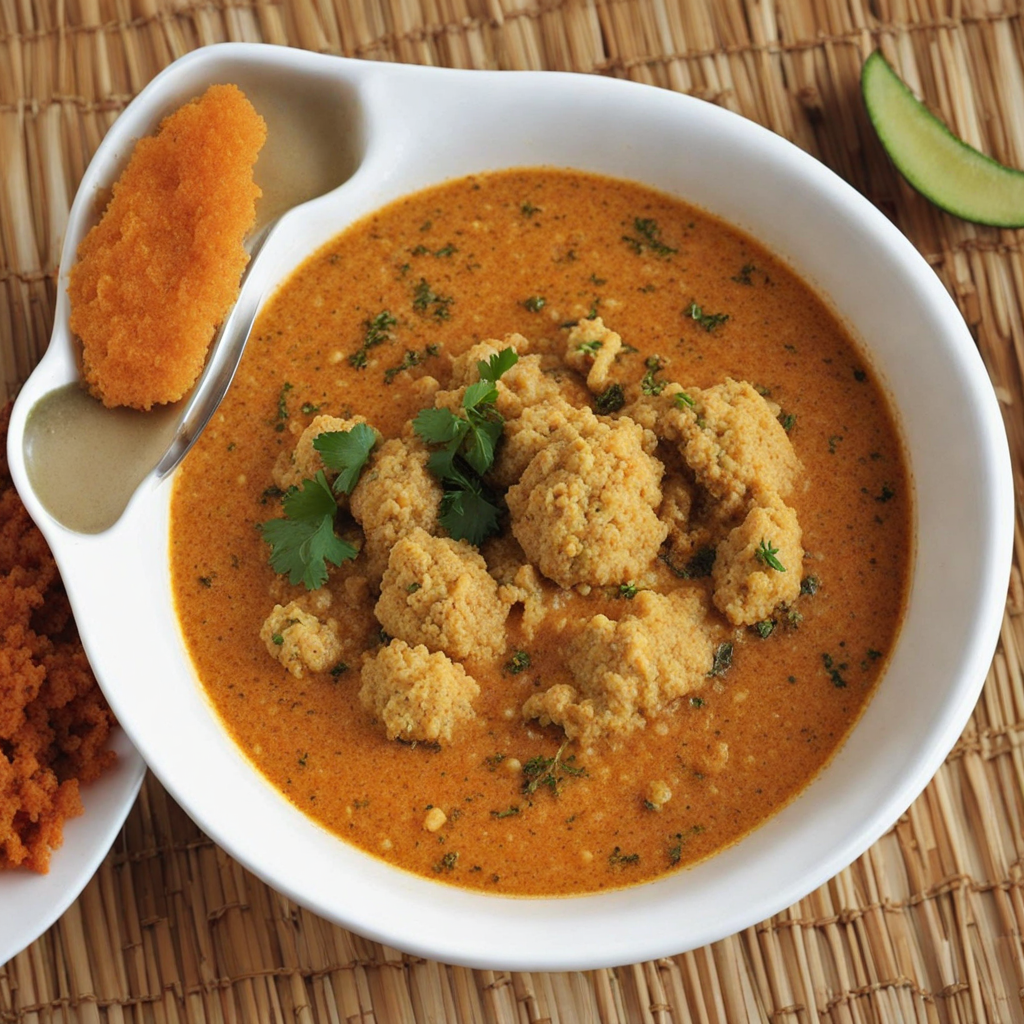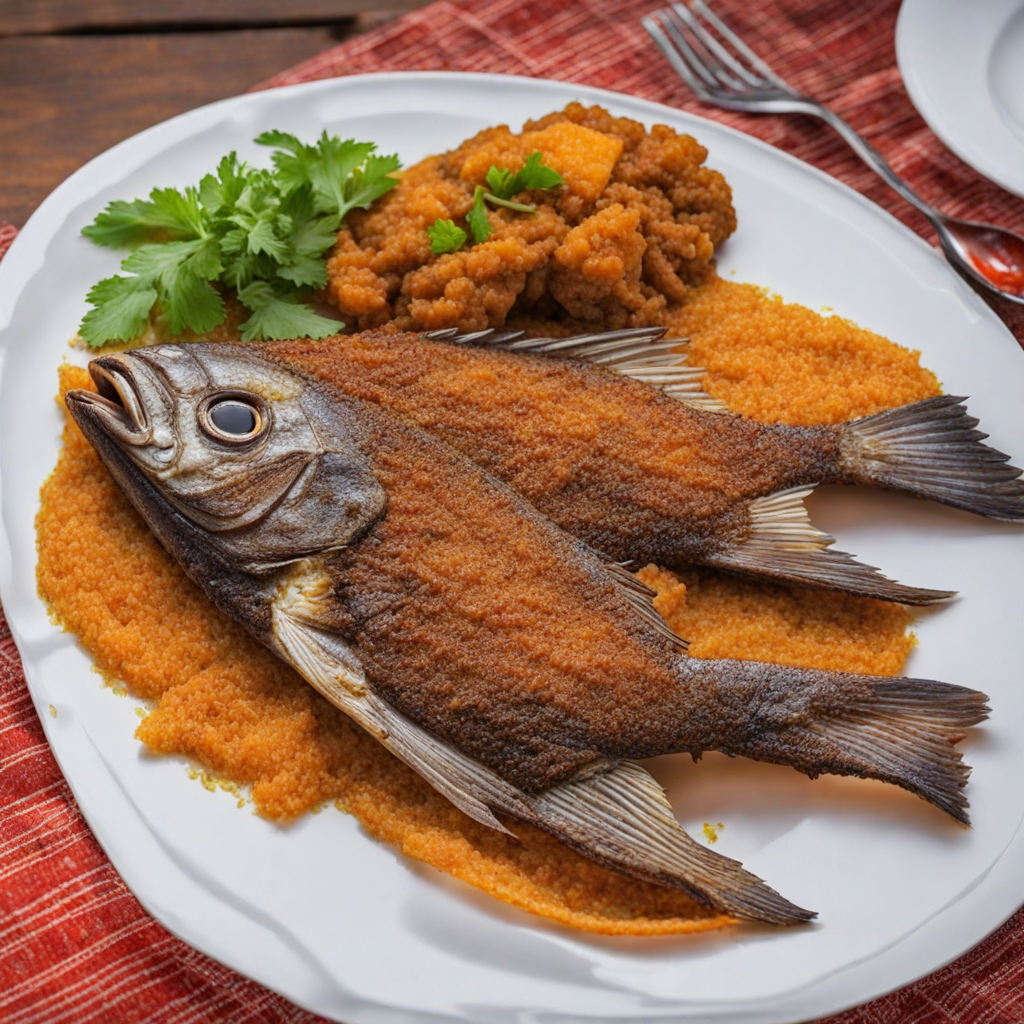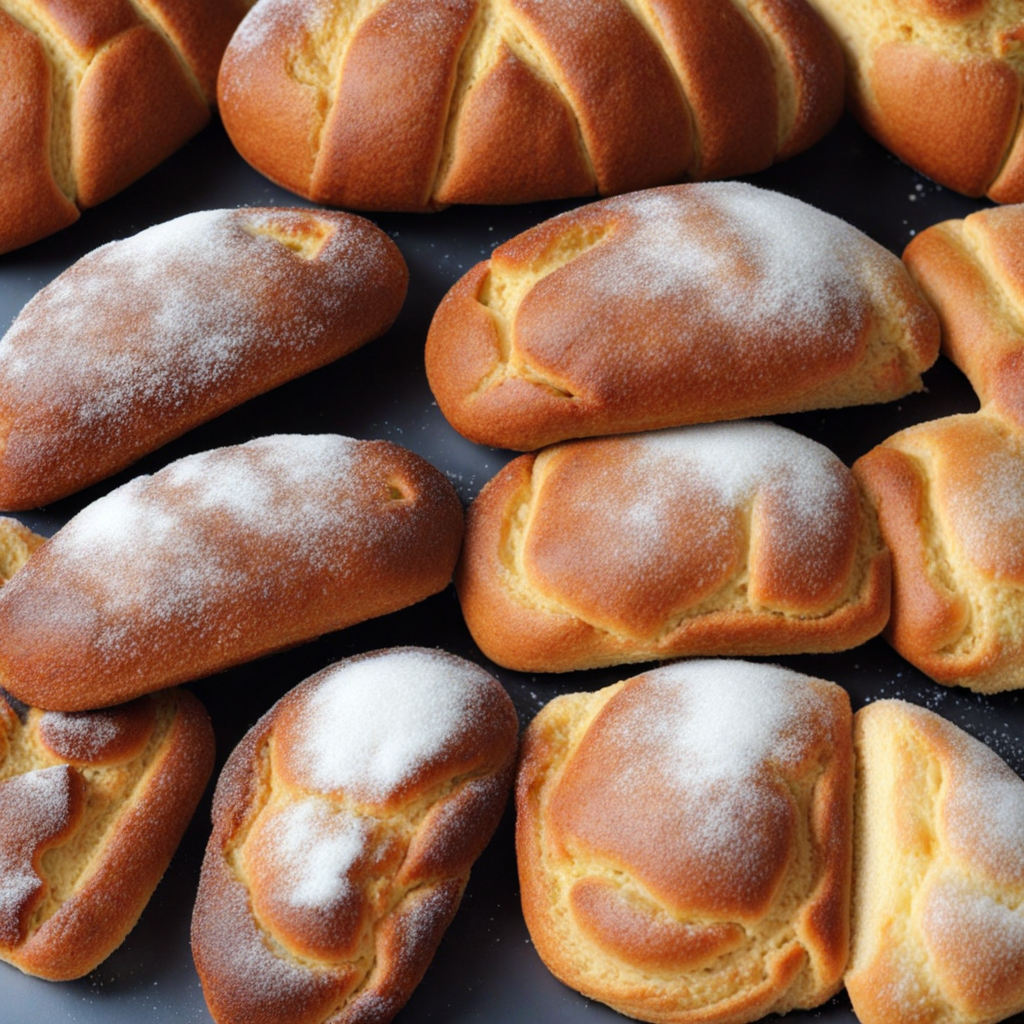Plantain Chips
Plantain chips are a delightful snack originating from Ghana, made from unripe plantains that are sliced thinly and fried to a perfect crisp. The process begins with selecting green plantains, which are firmer and less sweet than their ripe counterparts. They are peeled and cut into uniform slices, ensuring even cooking. The chips are then deep-fried until golden brown, resulting in a crunchy texture that is both satisfying and addictive. The frying process enhances the natural savory flavor of the plantains, making each bite a delicious experience. What sets Ghanaian plantain chips apart is their versatility in flavor. While the classic version is simply salted, many variations exist that incorporate spices and seasonings such as paprika, garlic powder, or chili for those who enjoy a bit of heat. This adaptability allows plantain chips to cater to various taste preferences, making them a popular choice among both locals and visitors. They can be enjoyed as a standalone snack, paired with salsas or dips, or even served alongside traditional dishes, adding a delightful crunch to any meal. Beyond their mouthwatering taste, plantain chips are also celebrated for their nutritional benefits. Plantains are rich in potassium, fiber, and vitamins A and C, contributing to a healthy diet. As a gluten-free snack, they are an excellent option for those with dietary restrictions. The combination of their unique flavor, satisfying crunch, and health benefits makes Ghanaian plantain chips an irresistible treat that invites anyone looking to explore new culinary horizons to indulge in this vibrant snack.
How It Became This Dish
The Delicious Journey of Akɛkɛ: A Culinary Treasure from Ghana In the diverse tapestry of Ghanaian cuisine, few dishes encapsulate the rich cultural heritage and communal spirit of the country quite like Akɛkɛ. This traditional food, often enjoyed during special occasions and festivities, offers a glimpse into the historical and social dynamics that shape Ghanaian foodways. With its origins rooted in the agrarian practices of the Akan people and its evolution through centuries of cultural exchange, Akɛkɛ stands as a testament to the resilience and creativity of Ghanaian culinary traditions. #### Origins: The Birth of Akɛkɛ The history of Akɛkɛ can be traced back to the Akan people, one of the major ethnic groups in Ghana. The dish is primarily made from fermented corn (maize) or cassava, which are staple crops in the region. The fermentation process not only preserves the grains but also enhances their flavor and nutritional value. This method of food preservation is a reflection of the agricultural practices of the Akan, who have cultivated maize and cassava for generations. Historically, corn was introduced to West Africa in the late 15th century by Portuguese traders, who brought it from the Americas. It quickly became a staple in the diets of various West African societies, including the Akan. The integration of maize into local cuisines led to the creation of numerous dishes, among which Akɛkɛ emerged as a beloved favorite. The name “Akɛkɛ” itself is derived from the Akan language, emphasizing its deep roots in the cultural identity of the people. #### Cultural Significance: More than Just Food Akɛkɛ is not merely a dish; it embodies the communal values and traditions of the Ghanaian people. It is often served during significant events such as naming ceremonies, weddings, and festivals, where it symbolizes unity and celebration. The act of preparing Akɛkɛ is often communal, involving families and friends who come together to share in the labor and the joy of cooking. The preparation of Akɛkɛ involves several steps, beginning with the meticulous process of soaking and fermenting the corn or cassava. Once fermented, the mixture is ground into a smooth paste and then steamed in banana leaves or placed in a pot. The steaming process allows the flavors to develop fully, resulting in a soft, slightly tangy dish that is both nutritious and delicious. In Ghanaian culture, food plays a pivotal role in social bonding. Sharing a meal of Akɛkɛ signifies hospitality and a warm welcome. When served alongside rich stews, soups, or grilled meats, it becomes a centerpiece of gatherings, fostering connections and conversations. The dish also serves as a reminder of the importance of community and kinship, reinforcing familial ties and social networks. #### Development Through Time: A Culinary Evolution As Ghana has evolved, so too has Akɛkɛ. The dish has undergone transformations influenced by globalization, urbanization, and the migration of Ghanaians both within and beyond the country. In urban areas, where traditional practices may be challenged by fast-paced lifestyles, Akɛkɛ is often prepared in more convenient ways, such as using pre-packaged fermented corn flour. This convenience does not detract from the essence of the dish but rather demonstrates its adaptability to modern life. Moreover, the diaspora has played a crucial role in the evolution of Akɛkɛ. Ghanaians living abroad often seek to maintain their cultural heritage through food, leading to new interpretations and variations of traditional dishes. In this context, Akɛkɛ has found a place in international culinary scenes, where it is often combined with elements from other cuisines, resulting in innovative recipes that honor its origins while embracing new influences. #### Contemporary Significance: A Dish for All Seasons In contemporary Ghana, Akɛkɛ has regained popularity as a symbol of national pride and cultural heritage. Chefs and food enthusiasts are rediscovering traditional recipes, emphasizing the importance of preserving culinary history. This resurgence is evident in various food festivals and cultural events across the country, where Akɛkɛ is celebrated alongside other traditional dishes. Furthermore, the rise of the farm-to-table movement has sparked interest in locally sourced ingredients, encouraging Ghanaians to reconnect with their agricultural roots. Many people are now planting their own maize and cassava, reviving traditional farming methods and promoting food sovereignty. This movement not only supports sustainability but also enhances the quality of Akɛkɛ, allowing families to enjoy the dish made from fresh, organic ingredients. #### Akɛkɛ and Global Recognition As the world becomes more interconnected, there is a growing interest in African cuisines, and Akɛkɛ is no exception. Food bloggers and culinary explorers are sharing their experiences with this traditional dish, introducing it to a global audience. Restaurants focusing on West African cuisine are beginning to feature Akɛkɛ prominently on their menus, showcasing its versatility and deliciousness. In this global culinary landscape, Akɛkɛ is celebrated not only for its rich flavor but also for its cultural significance. It serves as a bridge between generations, allowing younger Ghanaians to connect with their heritage while introducing others to the beauty of Ghanaian cuisine. The dish’s adaptability means that it can be enjoyed in various contexts, whether as a traditional meal or as a modern fusion dish. #### Conclusion: The Enduring Legacy of Akɛkɛ Akɛkɛ is more than just a dish; it is a reflection of Ghana's agricultural history, cultural values, and communal spirit. From its humble origins with the Akan people to its contemporary interpretations, Akɛkɛ has evolved while retaining its core significance. As Ghanaians continue to celebrate their culinary heritage, Akɛkɛ stands as a symbol of resilience, creativity, and unity. Today, as we savor a bite of Akɛkɛ, we partake in a journey through history, culture, and community. This delicious dish serves as a reminder of the importance of food as an expression of identity and belonging—a legacy that will undoubtedly endure for generations to come.
You may like
Discover local flavors from Ghana


